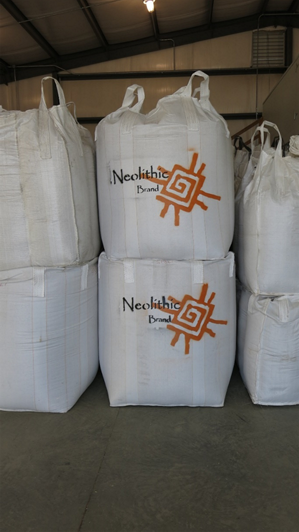
Spelt and emmer wheat, along with einkorn are known as the three ‘hulled grains’. Unlike modern wheat, these early grains do not thresh free of their hulls during harvest. This extra processing step adds expense and is one of the reasons that these grains have mostly disappeared from commercial scale agriculture.
Grain grown at the Powell (Wyoming) research station and by local farmers is brought to the Wyoming Seed Certification Service processing facility, located on the grounds of the UW Powell Research and Extension Center. This is where the processing occurs.
Here we have an A.T. Ferrell seed cleaner (1947). Cleaning is the first step in the process. Grain is first sent through the cleaner and then to the de-huller.
Our de-huller is a modern Codema centrifugal de-huller. The grain travels from the cleaner to the de-huller. Centrifugal force throws the grains again the stone ring, breaking the hull from the seed. Then the grain falls down through the aspirator.
The aspirator has a series of baffles. As the grain falls through the baffles, a counter flow of air draws the lighter hulls up and out to be packaged up for disposal. Note: We are currently looking for a use for the hulls, from compost to fertilizer, to pellets. This could be an important revenue stream for the future.
After cleaning and de-hulling, the grain is then cleaned a second time to remove any stray hulls or foreign material missed in the first pass. Emmer wheat is often cleaned a third time with a smaller, finer mesh screen because its seed is smaller and lighter and more difficult to clean.
Check out our processing video below.